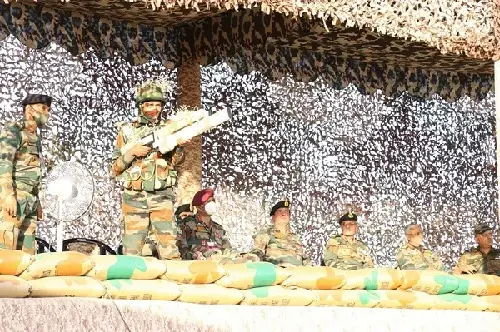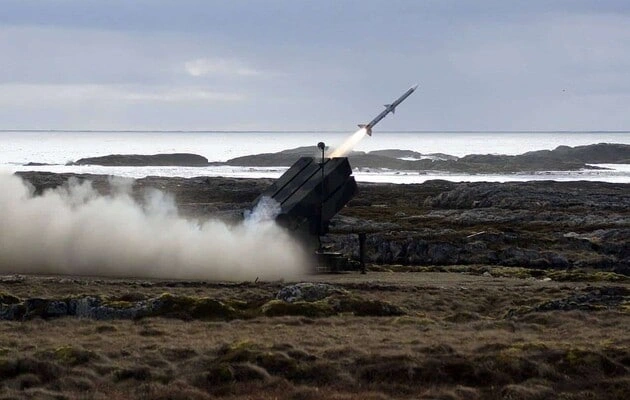The Indian Army is set to buy 35 sets of Drone Kill Systems, developed by Indian industry, fueling the ‘Atmanirbhar Bharat’ drive of making in India for the world.
The drones are being built under the Make 2 projects label–an industry-funded initiative to cater to the demands of Indian vendors by developing prototypes for them.
The Drone Kill System is a hard kill anti-drone system against low Radio Cross Section (RCS) drone/Unmanned Aerial System (UAS), which can function in all types of terrains, both during day and night.
Its induction in the Indian army is urgent as modern warfare uses surveillance and attack drones with deadly effects as seen in the Ukraine theatre and in the short war between Azerbaijan and Armenia.
Remotely Piloted Aircraft System, or the RPAS, have greatly impacted the modern battlefield and drone-related technologies are constantly evolving. The Defence Ministry believes that the indigenous industry has adequate expertise to develop world-class products in this field.

The Indian Army has approved Project Sanction Order (PSO) to 18 Developing Agencies (DAs) for procurement of these Drone Kill Systems, after the prototype had been successfully developed. under the Make 2 scheme, post successful development of the prototype. The project is reserved for MSMEs and start-ups.
#IndianArmy in collaboration with @dronefed is conducting ‘Him-Droneathon’, to invite proposals to develop drone-based solutions for supporting #IndianArmy operations in the mountainous terrain.#InStrideWithTheFuture#ArmyDesignBureau pic.twitter.com/SSnRG7dg4m
— ADG PI – INDIAN ARMY (@adgpi) August 8, 2022
Other projects whose PSOs have been approved are:
High-Frequency Man Packed Software Designed Radio (HFSDR): PSO for the development of a prototype of Frequency Man Packed Software Designed Radio (HFSDR) under the Make 2 scheme has been issued to 14 Developing Agencies (DAs). 300 HFSDRs, to ensure secure communication, are planned to be procured by the Indian Army, on the successful development of the prototype. The state-of-the-art, lightweight HFSDR will provide long-distance radio communication through enhanced data capability and bandwidth coupled with enhanced security. It will facilitate blue-force tracking with map-based navigation using GIS, thereby increasing real-time situational awareness. These radio sets will replace the existing HF radio sets in the inventory, which have limited data handling capability and obsolete technology.
Infantry Training Weapon Simulator (IWTS): PSO has been issued to four Developing Agencies (DAs) to develop the prototype for subsequent procurement of 125 sets of IWTS under the Make 2 procedure. The IWTS is the first tri-service Make 2 project with the Indian Army as the lead service.
The project is reserved for MSMEs/ Startups. IWTS will be utilised to augment the marksmanship skills of young soldiers on a variety of weapons used by the, providing user-friendly graphics to simulate battle scenarios. IWTS is a modern training aid, which will reduce recurrent expenditures on live ammunition, besides obviating the challenges of availability of firing ranges and inclement weather. Each IWTS will facilitate the training of 10 personnel at any one point of time.
155mm Terminally Guided Munitions (TGM): Project Sanction Order has been issued to six Developing Agencies (DAs) for the development of 155 mm Terminally Guided Munition (TGM) under the Make 2 scheme. Variants of ammunition were held in the inventory of the Indian Army (IA), sans, the precision strike capability. The IA, therefore, plans to procure approximately 2000 rounds of 155mm TGM against High-Value Targets with assured Precision and Lethality for mission accomplishment and minimum collateral damage.
Medium Range Precision Kill System (MRPKS): A project Sanction Order has been issued to 15 Developing Agencies (DAs) for developing a prototype of MRPKS under the Make-2 category of DAP 2020. Post successful development of this prototype, the IA will procure 10 Sets of MRPKS. The Medium Range Precision Kill System (MRPKS), once launched can ‘Loiter’ in the air for up to two hours and can acquire, designate and engage real-time high value targets up to 40 km. In times to come we see our country transforming as “AtmaNirbhaar” in Loitering Munition Technology.
The Indian Army is already progressing with 43 ongoing projects under the Make 2 procedure of Capital Acquisition. 17 out of 43 projects have been initiated through suo-moto proposals received from the industry, which has generated enthusiasm and confidence in the Indian defence industry for participation in the ‘Make procedure’.
The Make II procurement scheme has given an impetus to increase the design and development in the defence industry to achieve the indigenisation of high-end technology systems in various types of weapon systems, ammunition and modern training systems, which are currently not available in the country. Multiple measures to expedite the ongoing Make II projects have resulted in tangible outcomes. 22 out of 43 Make II projects are now in the prototype development stage, which is 66% of projects by cost (Rs 18,000 crores out of 27,000 crores).
Also Read: India’s anti-Ballistic Missile test serves notice to China




















